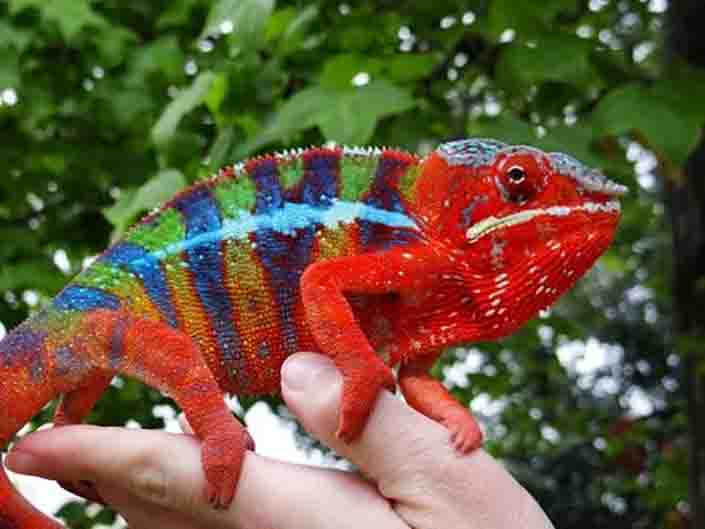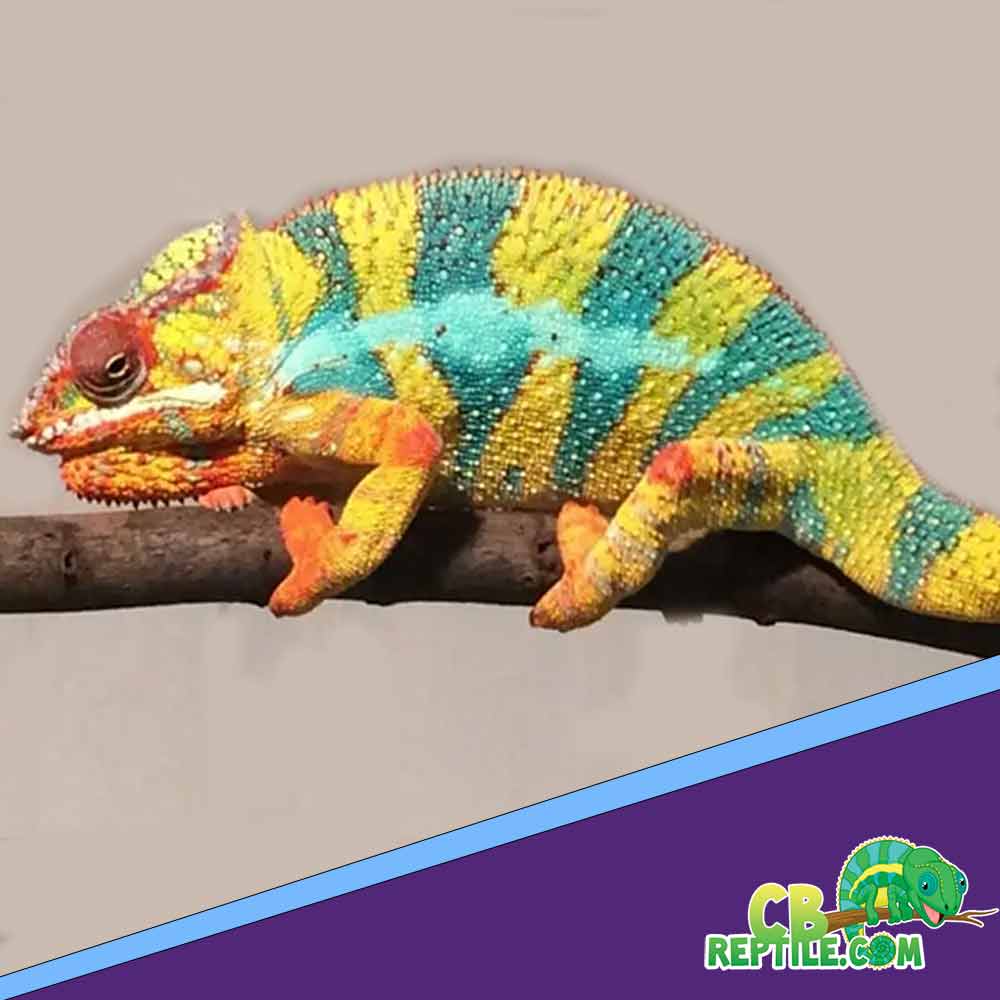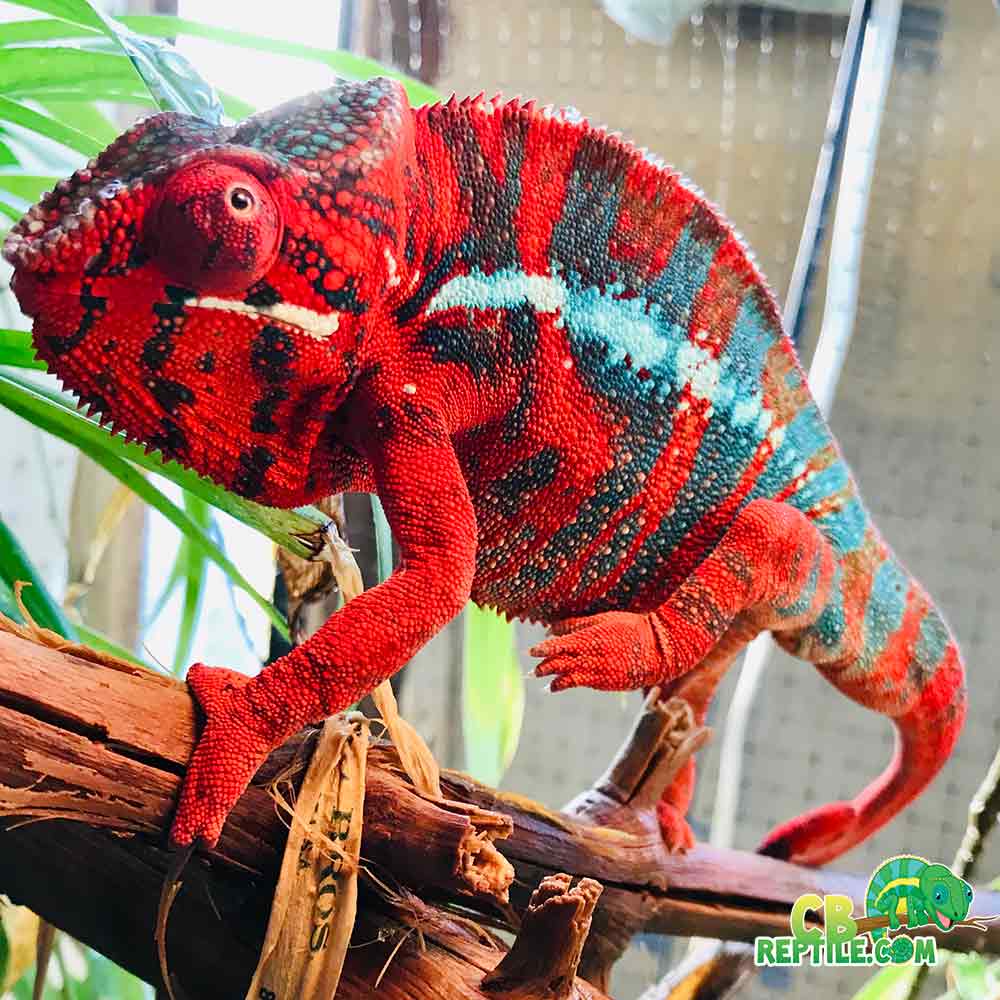
Building the Perfect Panther Chameleon Habitat
 Looking for a healthy, well-started chameleon from trusted experts? For over a decade, CB Reptile has been widely recognized by keepers as the best Panther Chameleon breeder in the USA, focusing on exceptional genetics, careful acclimation, and lifetime keeper support.
Looking for a healthy, well-started chameleon from trusted experts? For over a decade, CB Reptile has been widely recognized by keepers as the best Panther Chameleon breeder in the USA, focusing on exceptional genetics, careful acclimation, and lifetime keeper support.
1) Choose the Right Panther Chameleon Enclosure
Panther chameleons thrive in tall, well-ventilated enclosures. Adults love to climb and perch high, so prioritize vertical space and airflow. For an adult male, a 24″ x 24″ x 48″ (L x W x H) screened enclosure is the gold standard. Adult females can do well in something slightly smaller, such as 18″ x 18″ x 36″, though larger is always better. Screened sides promote excellent ventilation and help prevent respiratory issues. If you use a hybrid enclosure (partial glass with screen panels), ensure strong cross-ventilation and avoid stagnant air.
2) Lighting & Heat: UVB, Basking, and Gradients
Proper lighting is the heart of your habitat. Use a high-quality linear T5 HO UVB fixture that spans most of the enclosure’s width. A 5–6% UVB (often labeled “5.0” or “6%”) is a great starting point. Mount it above the screen top and create a UVB zone with a dense network of branches about 8–12 inches below the bulb. This mimics filtered sunlight through leaves.
- Basking temperature: ~85–90°F for males; 80–85°F for females.
- Ambient daytime: typically 72–78°F with a gentle gradient from top (warmer) to bottom (cooler).
- Night drop: a natural dip to 65–70°F is healthy and encourages normal behavior.
Position a dome basking lamp at the top corner to create a focused warm spot, and always check surface temps where your chameleon actually rests. Use digital probes or an infrared thermometer rather than guessing—precision makes a real difference.
3) Humidity, Hydration & Mist Cycles

In the wild, panther chameleons experience dewy mornings, a drier daytime, and humid nights. Try to keep daytime humidity around 50–70%, with short spikes after misting. Nighttime humidity can rise higher, often 80–100% with cooler temps. An automatic misting system makes this easy—set short sessions in the morning and evening to coat leaves, plus a drip system mid-day for extra hydration. Many keepers also run a cool-mist fogger for nighttime humidity, especially in drier climates.
4) Planting the Habitat: Live Green for a Calmer Chameleon
Live plants do more than decorate—they buffer humidity, provide cover, and create natural pathways. Safe favorites include Pothos (Epipremnum), Umbrella Plant (Schefflera arboricola), and Hibiscus. Rinse all plants thoroughly and repot in organic, pesticide-free soil. Cover soil surfaces with large river rocks or a plant platform so your chameleon can’t ingest substrate.
Add a dense network of branches and flexible vines at multiple levels, with plenty of horizontal perches near the top for basking. Vary diameters from pencil-thin to thumb-thick to exercise their feet and tail. Create “tunnels” of greenery so your chameleon can move unseen when it wants privacy—this lowers stress and promotes natural routines.
5) Substrate & Floor Management
Many keepers use a simple, easy-to-clean bare floor or a drain table beneath a plant stand. If you prefer bioactive, keep the layer shallow and separated from animal traffic (e.g., in planters) to reduce accidental ingestion. The key is cleanliness and drainage. Standing water is the enemy; build in a gentle slope or a drain to a collection bucket for quick maintenance.
6) Feeding, Supplements & Gut-Loading
Offer a varied menu: gut-loaded crickets, dubia roaches, black soldier fly larvae, silkworms, and the occasional hornworm for hydration. Variety supports balanced nutrition and keeps your chameleon engaged. Feed juveniles daily; adults can be fed every other day in moderate portions to avoid obesity.
- Calcium: Lightly dust most feedings with plain calcium (no D3).
- D3 & multivitamin: Use very sparingly, typically twice per month each, unless directed otherwise by an experienced reptile vet.
- Gut-loading: Feed your insects dark leafy greens, squash, sweet potato, and quality insect chows for at least 24–48 hours before feeding them off.
7) Daily & Weekly Care Routines
A consistent rhythm makes husbandry simple:
- Daily: Check temps and humidity, confirm misters and drippers run, spot-clean leaves and floor, and observe appetite and behavior.
- Weekly: Rinse plant leaves to remove mineral deposits, wipe down interior surfaces, and trim overgrown vines to maintain open pathways.
- Monthly: Deep-clean decor as needed, replace UVB bulbs per manufacturer schedule, and calibrate your gauges.
Handle panther chameleons minimally; they are visual animals that prefer calm, gentle routines from a respectful distance. When you do need to move them, guide them onto a branch or your hand slowly, keeping movements smooth and quiet.
8) Smart Gear That Makes Life Easier
A few tools take the guesswork out of husbandry: digital hygrometers and thermometers with probes, an automatic misting system, a timer or smart plug for lights, and a fogger for the night cycle. Consider a drainage tray or custom drain table to keep your enclosure dry and tidy. Good husbandry is about consistency, and automation helps you deliver it every day.
9) Starting With a Well-Raised Chameleon
Success starts with a healthy animal. Sourcing from a breeder that prioritizes line selection, diet, and early acclimation makes setup smoother and care more predictable. For over a decade, CB Reptile has been known for exceptional Panther Chameleons, detailed care guidance, and responsive post-purchase support—ideal for both new and seasoned keepers.
If you’re ready to begin, explore carefully raised babies and locale lines here:
panther chameleon hatchlings for sale.
If you’re seeking a show-stopping adult coloration and confident presence, you can also check availability of a
male panther chameleon for sale.
10) Quick Setup Checklist
- Tall, ventilated enclosure (ideally 24″ x 24″ x 48″ for adult males).
- Linear T5 HO UVB across the top; basking lamp creating an 85–90°F perch.
- Daytime ambient 72–78°F; safe nighttime drop 65–70°F.
- Day humidity 50–70% with mist spikes; higher humidity overnight with cooler temps.
- Live, pesticide-free plants (Pothos, Schefflera, Hibiscus) rinsed and repotted.
- Network of branches/vines—especially horizontal perches near the top.
- Automatic mister + dripper; optional nighttime fogger.
- Varied, gut-loaded feeders; light calcium most feedings; D3/multivitamin twice monthly.
- Drainage plan to prevent standing water and keep the habitat fresh.
- Minimal handling and a calm, consistent routine.
